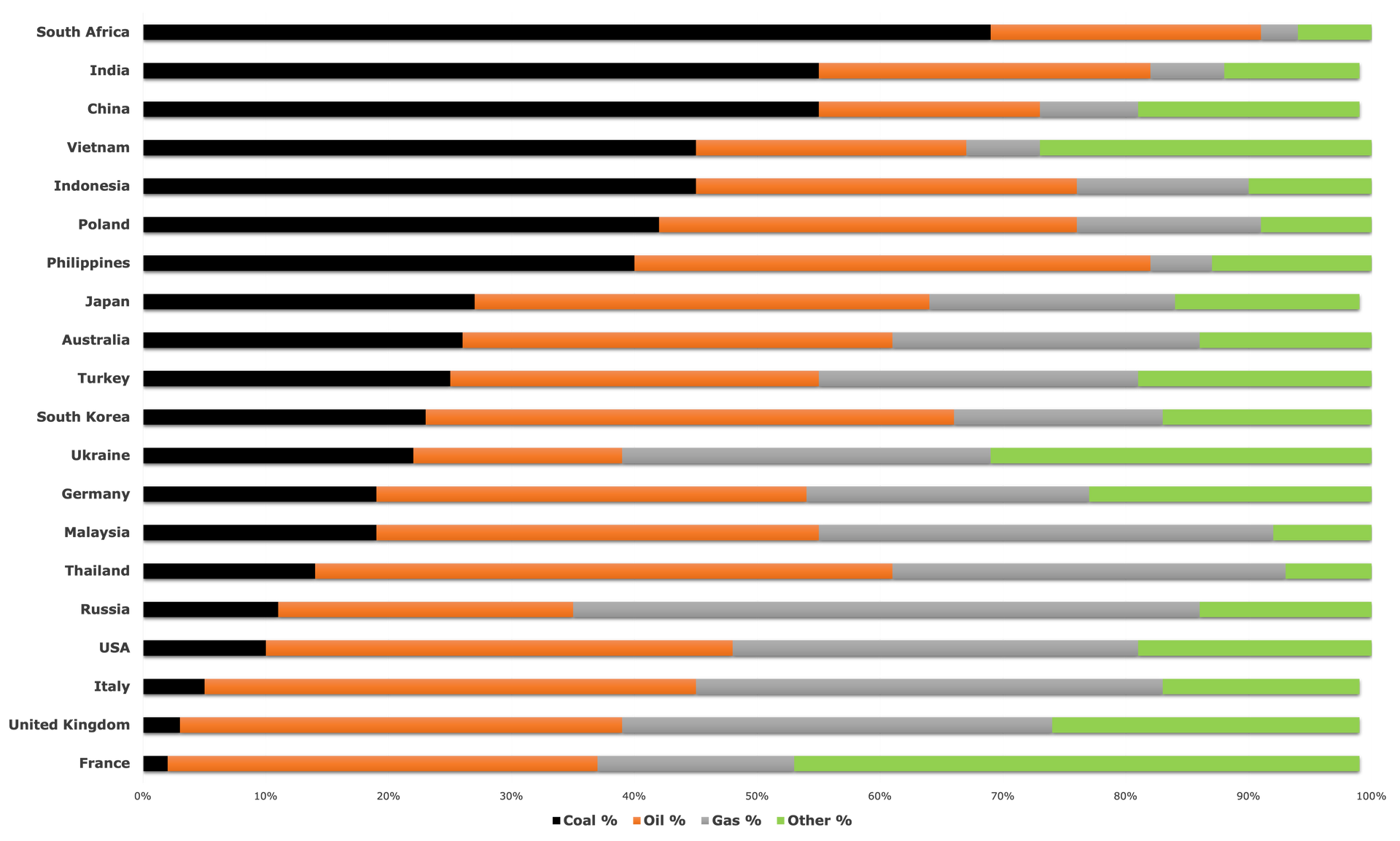
#Renewables #Sustainability #Energy Management #Energy Consultancy
In recent times, the focus of global energy policies and discussions has been on the imperative of decarbonising the energy sector during the transition towards achieving net-zero emissions.
Nevertheless, despite efforts to reduce carbon emissions, more than 80% of the world's primary energy usage still stems from fossil fuels.
Among these, coal, renowned for being the most cost-effective energy source globally, stands out as the largest contributor to CO2 emissions associated with energy production.
The graph below uses data extracted from the Statistical Review of World Energy to show the extent to which certain nations place reliance on fossil fuels, particularly coal, within their energy mixes.
Significance of Coal in Developing Economies
Coal retains its position as the predominant source of electricity generation and the principal propellant for industries such as iron, steel, and cement production.
This makes coal a pivotal topic in discussions concerning both climate change and energy strategies. Notably, despite the drive towards cleaner alternatives, coal remains an affordable and abundant energy source, particularly in emerging economies where there is a swift expansion in demand.
Out of the countries featured in the statistical review below,
South Africa emerges as the nation most heavily dependent on coal, with coal contributing to 69% of its primary energy consumption in the year 2022.

In 2022, the worldwide usage of coal exceeded 8 billion tonnes in a single year for the first time, with China and India emerging as the two biggest consumers.
China's power industry contributes to a third of the planet's coal usage.
Simultaneously, India, with an annual growth rate of 6%, has doubled its coal consumption since 2007—prospects indicate that it is expected a surge in coal consumption for the following years.
Demand for coal in developed nations
The use of coal in the United States has experienced an approximate 50% decrease in contrast to the early 2010s.
Efforts such as the Inflation Reduction Act (IRA), which allocates nearly $370 billion to expedite the energy transition in the U.S., are anticipated to uphold the decline in coal consumption trajectory within the United States.
A similar trend can be observed within the European Union.
For instance, in France, only 2.5% of its primary energy consumption is sourced from coal, a proportion that is merely half of what it was in the early 2000s.
In Germany, which boasts Europe's largest economy, coal still contributes to 18.9% of the total energy consumption (slightly up from 2021 due to the energy crisis). Nevertheless, a decade ago in 2012, that figure was even higher, constituting 24.9% of primary energy utilisation.
While coal consumption is decreasing in developed nations but maintaining stability in emerging economies, the International Energy Agency predicts that the demand for coal will level off at the levels seen in 2022 until 2025, at which point it will commence declining.
Would you like to know more?
Or do you have any questions about one or more of these topics?
Feel free to contact us at hello@bramoenergy.com.





























